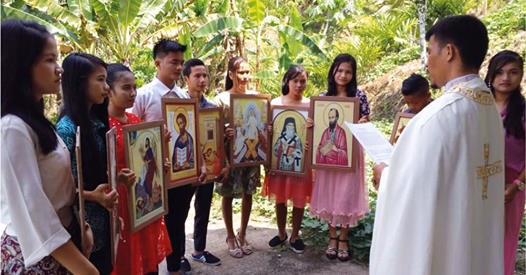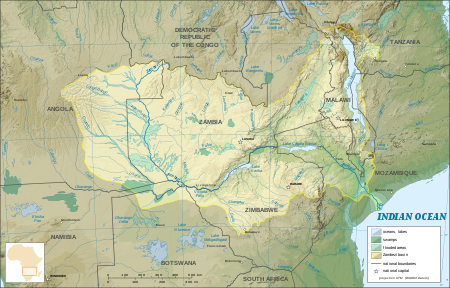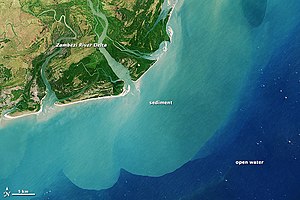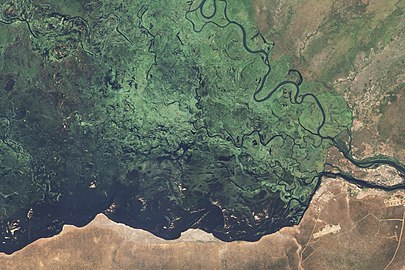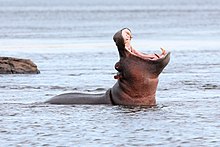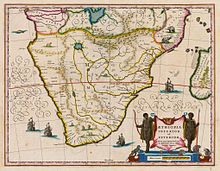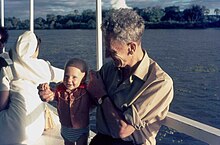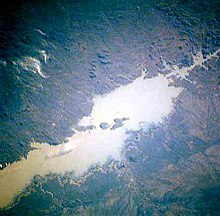By His Eminence Archbishop Serafim Kykotis
Greek Orthodox Archbishopric of Zimbabwe
Today’s Gospel extract reminds us of an amazing event, which occurred
1500 years before Christ’s crucifixion. In point of fact, the book of
Holy Scripture, Numbers, the 21, refers to the event where after the
Israelite People were released by the Egyptians and though they had
returned to their native country, in the desert where they found
themselves, they began to complain strongly against Moses despite the
fact that God in a miraculous way had fed them with “manna”. Their
ingratitude and faithlessness however is punished immediately. Poisonous
snakes scattered death everywhere. The desert where the ungrateful ones
found themselves – the thankless and faithless Israelite – was
transformed into a place of pain, anguish and death. The Jews then run
to Moses in repentance and ask for help. They plead with him and entreat
him to mediate on their behalf that God will take pity on them. Then
God, as the Holy Scriptures tells us, orders Moses to make a copper
snake and to raise it onto a tall stick in the midst of the people. In
continuation, the Israelite People received the instruction that when a
poisonous snake bit them, they should fix their sight on the copper
snake and they would be saved.
And thus, it happened.
The Israelite sight towards the copper snake neutralized the power of
the poisonous snakes. Thus the Israelite People were saved.
Christ reminds us of this story, making it parallel to his ascent
on the cross, so that whoever believes in Him will be saved. After this
event from the Old Testament, the course of the redemptive work it
outlined and stressed, which God’s offers to man through his only
begotten Son, our Lord Jesus Christ. This is the reason besides that
this event is referred to by Christ and especially the Sunday before the
elevation of the Holy Cross, we are going to celebrate tomorrow.
From within this event, the Jews above all are distinguished who
represent man, the snakes are identical to sin and the copper snake
foreshadows the Cross of Christ.
It is well known from the first
book of the Old Testament, the book of Genesis, that God has established
man as the King and Lord of the whole of creation. He adorned him with
logical intellect to think, to speak and to progress. However, instead
of man declaring his boundless gratitude to his wise creator, he
distanced himself. He infringed God’s commandment with the direct
consequence of beginning to taste the bitter harvest of his demise. The
original sin of the first created people, due to the unity of human
nature, had abolishing consequences for the entire human race in the
sense that now, every descendant of Adam and Eve, was born with the
propensity and inclination to be attracted by evil, to take pleasure in
wrongdoing and to live in sin. Here is the beginning of our ecological
negative activities as humans destroying the holy whole Creation of God
as a gift of God for the whole Humanity and for the future generations.
Tanzania (here)
In front of the exiled Paradise, there spreads a boundless and stormy
sea which creates uncertainty, anguish, struggles, illnesses,
misfortunes, troubles, sweat, pains and calamities without the
possibility of deliverance existing – everywhere there is pain and
death. From man’s life, orientation was missing, which would lead them
to the harbor of salvation.
The few enlightened however were
certainly not missing from God’s chosen people who constituted the means
of communication between God and man. But even they were not listened
to by the masses because every type of snake, the different
transgressions had become the content of their life.
Just as the
poison of the snakes brought about death to the Jews, so too sin brought
about death to the human soul, it darkened and distorted man’s mind, it
lightened his will, it dissolves the institution of the family, it
waters people with glasses full of grief and bitterness, it dissolves
every hope man has, thus becoming the captive of some passion. This was
the wretched situation the people found themselves to be in my beloved
before the coming of Christ to the world. But in this situation before
Christ, continue to be those who live far from Christ – that is, all
those who continue to be enslaved and bound to their passions, those who
are without the intention of repentance and insist on living in the
state of their sin. God’s boundless love dragged man away from the fall
of death, from the anxiety of life, from sin, pain and misfortune. God
offered deliverance to all the people. “For God so loved the world, that
he gave his only begotten son, so that whoever believes in him does not
perish but has eternal life”.
Thus today’s Gospel tells us that
Christ came to the world and was crucified so that “whoever believes in
him will not perish but will have eternal life.” This event as we have
seen was first modeled in the Old Testament when Moses raised the copper
snake and the Jews were saved from the poisonous snakes, when they
looked upon it with faith. Thus, whoever believes and is united with
Christ who was raised on the cross, is saved from death. He has eternal
life Christ conquered death.
Contemporary society avoids speaking
about death. It is afraid that it might perhaps create fearful emotions
and oppressiveness in man. This stance however constitutes an error
because under no circumstance does flight constitute a real solution. In
opposition, Christian upbringing takes a stance where death is
concerned. It speaks about it and it leads to victory in opposition to
it. Death connects man with Christ-and it makes him through God’s
grace, Immortal.
Kenya (here)
Finally, the drama of death is clearly a human
drama, which is only solved when man is united to the incarnate Christ.
Then there is no death, because death for man who lives in Christ
constitutes a crossing, which leads him to immortality: “Christ has
risen from the dead, by death trampling upon Death, and has bestowed
life to those in the tombs.
Christ’s death made eternal life a
gift for us. Man’s salvation was realized upon the cross at Golgotha.
Christ’s sacrifice delivered humanity. It offered an authentic
situation, all the values that uplift man to the sphere of God’s
Kingdom, truth, love, freedom, peace and furthermore he gave to every
man the power to reach Godliness and to become equal to God through
grace.
Two thousand years have passed my beloved, from the time
when the cross was raised at Golgotha. Man however has not utilized the
possibilities, which God offered him. He scorned this Godly love. He
refused to implement the truth, which Christ brought to the world. He
drove himself to a new distance. Instead of reaching godliness,
traveling the road of grace, he reached the godliness of material
things, following the road of perfecting himself. Man of our age set
himself up as an idol and he became enslaved to his passions. On the
matter of material progress and economic prosperity he has the
inclination to sacrifice everything, even his soul. Thus contemporary
man, despite his technological achievements and his material conquests
feels restless and tired. His stomach is full but his soul is empty. He
sees that destruction is advancing and he makes no effort to stop it.
Disillusioned by everyone and everything, he has allowed every
possibility of resistance to become paralyzed within himself and he had
believed that everything for him now has become lost. This is the tragic
mistake of contemporary man - his despair and his indifference.
We must never forget that then when Christ lived as a man on the earth,
similarly now too He is always close to us in order to lead us
victoriously to the glory of the Resurrection, of the Kingdom of the
Father and of the Son and Holy Spirit. God gave us everything. He gave
and he gives everything abundantly to the good and the evil. He sends
His goods to the just and unjust He raises His sun on the sly and on the
good. He loves friends and enemies. In the same manner, God wants us
also to give. He wants us to give to our fellow human beings kindness,
love, justice and humility. He wants us to give to others consolation,
hope and joy. He wants us to give the good example of a Christian life.
We must give way to rage, light to darkness, truth to lies, freedom to
tyranny. He wants us to give like Him without calculations, without
self-interest without violence. Each giving of this nature is also an
ascent, a transformation, an orientation that leads to the Christian
orientation of mankind. This is why the commandment of love towards
every person is placed precisely after the commandment of our love
towards God.
By omitting to give our love to our neighbors, we omit to declare our love to Christ.
However, under no circumstance should we upset the content of our love
with the acceptance and supporting of erroneous and catastrophic views,
but oppositely, with our resistance of these. The whip, which Christ
used in the temple to drive away those who did not respect God, was an
act of love.
"Official opening and blessings of our brand new beautiful kindergarten in Waterloo..." Sierra Leone















